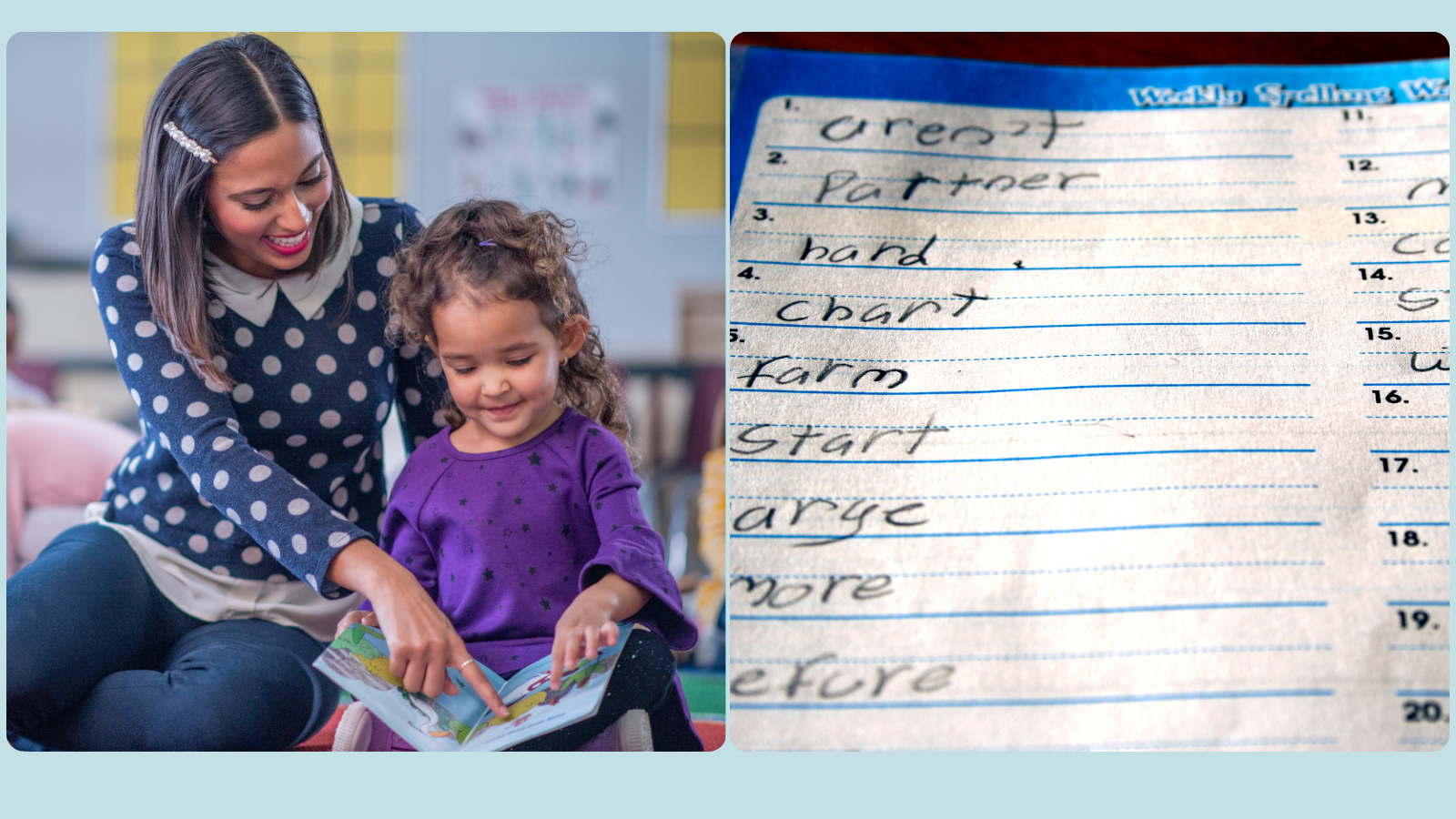Dysgraphia: significant difficulties with handwriting, spelling, and/or written expression. FAQs on signs, assessment, diagnosis, and support (including resources to help)
Almost everyone has heard of the reading disorder, dyslexia. But not many people know about its writing counterpart, dysgraphia.
1. What is “dysgraphia”?

Dysgraphia is a disorder of writing ability and writing development at any stage of learning (Chung et al., 2020). In plainer English, dysgraphia means difficulties with spelling and written expression (SPELD NSW, 2020).
“Dysgraphia” is a weird word. But it makes sense when you break it up:
- dys-, is a common word-forming element, from Greek, meaning “bad, ill, difficult, abnormal, imperfect”.
- -graph, means “writing”, “that which writes”, or “writer”, as in “autograph” (written with one’s own hand), from the Greek word “graphos”.
- -ia, from Latin and Greek, is a word ending used to form abstract nouns. It’s most often used for flowers (e.g. dahlia), countries (e.g. Australia) and diseases (e.g. malaria) (Etymology Online, 2023).
2. What does dysgraphia look like in the real world?




- A student with dysgraphia will perform significantly below class level on writing tasks (Dohla & Heim, 2016).
- Significant writing problems often have negative knock-on effects for a student’s motivation, participation and performance at school and/or in everyday activities (APA, 2021).
3. Key ‘red flags’ and signs of potential dysgraphia

Dysgraphia presents with different symptoms at different ages. It can cause problems with:
- letter formation and legibility;
- letter spacing;
- spelling;
- fine motor coordination;
- rate of writing;
- grammar; and/or
- text planning, organisation and composition, e.g. when writing narratives, explanations, or persuasive essays.
Dysgraphia can present differently at different school stages. Some signs of potential dysgraphia are as follows:
| Age group | Signs |
| Preschoolers | Awkward pencil grip or body position. Tires easily when writing. Avoidance of writing and drawing tasks. Letters are poorly formed, inversed, reversed, and/or inconsistently spaced. Difficulties staying within margins. |
| School-aged children | Slow handwriting. Illegible handwriting. Poor spacing. Switching between cursive and print. Significant spelling difficulties. Language difficulties with word-finding, sentence completion, and text writing. |
| Adolescents and young adults | Illegible and/or slow handwriting. Ongoing significant spelling difficulties. Difficulties with organisation of thoughts in writing. Difficulties with written syntax and text types (e.g. story grammar or essay writing). |
| Source: | United States Centre for Learning Disabilities: Signs of dysgraphia, via Disorder of written expression and dysgraphia: definition, diagnosis, and management – PMC |
4. How common is dysgraphia?

Very. Between 10-30% of children experience difficulties with writing, although the exact prevalence depends on your definition of “dysgraphia” (see below) (Chung et al., 2020; Dohla & Heim, 2016).
Dysgraphia is more common in boys than girls (e.g. Hawke et al., 2009), consistent with many other neurodevelopmental disorders. However, as with many disorders, it’s possible that some girls are missed, e.g. girls with neat handwriting and good spelling skills but difficulties expressing their ideas in writing.
5. Why should we care about dysgraphia?

Lots of reasons:
- Writing is a fundamental component of literacy, and crucial for success at school and work (McCloskey & Rapp, 2017).
- Putting aside the hype of generative AI tools like ChatGPT, writing remains an essential skill for school, work, and life success.
- Writing becomes more important in high school, with written examinations and assignments becoming the dominant mode of assessment.
- The process and discipline of writing can help people organise their thoughts and to reflect critically about their thoughts, beliefs, values and behaviours.
- Writing notes by hand may help students to remember what they’ve learned better than computer-based notes or passive learning.
- Writing tasks can take up to half of a school day. Slow and poor writers are sometimes mislabelled as ‘lazy’ or ‘sloppy’ or unintelligent, which can lead to low expectations from teachers and peers.
- Poor handwriting is associated with lower self-perception, lower self-esteem and poorer social functioning.
- Some life tasks require handwriting, e.g. filling in government forms, and voting (Chung et al., 2020).
6. Is “dysgraphia” an official, formal diagnosis?

No. As with the term “dyslexia”, the American Psychological Association does not recognise the term “dysgraphia”. There is (as yet) no professional consensus on the diagnostic criteria for dysgraphia.
7. What is the name of the “official diagnosis” for dysgraphia?

In the Diagnostic and Statistical Manual of Mental Disorders, Fifth Edition (DSM-5), dysgraphia is classified as a neurodevelopmental disorder called a specific learning disorder in written expression. (This mirrors the “official” name of dyslexia: specific learning disorder with impairment in reading.)
Despite its lack of official recognition, we prefer the term “dysgraphia” over the DSM-5 descriptor – mainly because it’s shorter!
8. Are there different kinds of dysgraphia?

Yes, although there is a lack of consensus on the exact scope and subtypes of dysgraphia.
There are two main kinds of dysgraphia:
- Acquired dysgraphia: This occurs when existing brain pathways are disrupted by an ‘event’, e.g. a brain injury, neurologic disease, or degenerative condition.
- Developmental dysgraphia: This is a difficulty in acquiring writing skills despite sufficient learning opportunities and cognitive potential.
In this article, we focus on developmental dysgraphia, which we will refer to as “dysgraphia” for simplicity.
Dysgraphia cases can be broken down into a few (overlapping) sub-categories:
- Motor dysgraphia: Impairment in the production of written text due to a lack of muscle coordination. These deficits are usually attributed to difficulties with fine motor control, visual perception, and proprioception (awareness of the body in space), and often result in illegible and/or slowly formed handwriting (eg. Fournier del Castillo et al., 2010).
- Spatial dysgraphia: Problems with spatial perception, affecting the spacing of letters (Deuel, 1995) .
- Linguistic dysgraphia: Language processing deficits related to written expression. They may include:
- inefficiency of the “graphomotor loop”, in which phonological memory (regarding the speech sounds associated with phonemes) communicates with the orthographic memory (regarding written letters and graphemes);
- impaired verbal executive functioning; and/or
- difficulties organising and/or using language structures and text types, including difficulties with discourse-level tasks, like narratives, expository writing and persuasive essays.
Students with significant spelling difficulties are sometimes described as having “dysorthography”, “dyslexic dysgraphia” or “specific spelling disorder” (Berninger, 2008).
In terms of DSM-5, dysgraphia – or, more precisely ‘specific learning disorder with impairment in written expression’ – is subdivided into problems with spelling, grammar and punctuation and clarity or organisation of written expression (Dohla & Hein, 2016).
9. Who diagnoses dysgraphia?



Ideally, the diagnosis is made:
- by a team involving an educational psychologist (for a review of the DSM-5 criteria), occupational therapist (for an assessment of motor skills, grip, positioning and handwriting), a speech-language pathologist (for an assessment of phonological awareness, oral language (including oral language comprehension), reading, and written expression), class teacher(s), and the student’s learning support team; and
- following an analysis of evidence from multiple sources over time, including observations, parent and teacher reports, a review of completed schoolwork, and standardised testing.
In practice, at least in Australia, the formal diagnosis is made by educational psychologists (often with input from teachers and other professionals). As with dyslexia, not everyone can afford a formal assessment by an educational psychologist. This means that most children with dysgraphia go undiagnosed despite sometimes very obvious signs of writing difficulties.
10. How is potential dysgraphia assessed? (What do we look for when assessing a student for possible dysgraphia?)

Education and health professionals, including speech pathologists, need to ‘up our game’ in this area. Traditional dysgraphia assessments looked at things like:
- slow writing speed;
- illegible handwriting;
- spelling deficits; and
- poor pencil grip and writing posture.
These assessment batteries tend to include tasks looking at speed and legibility of handwriting when copying letters, words, pseudowords (also known as nonsense words), and sentences.
Understanding a student’s social, speech and language histories is important. Not all kindergarten students start from the same place when it comes to being prepared to learn to write at school. Before assessing for possible dysgraphia, we should conduct a detailed interview with parents, carers, teachers and others who have first-hand knowledge of the student’s writing abilities and challenges at school and in the real world. We also need to understand factors like:
- the presence of known risk factors for communication disorders;
- any existing diagnoses of other neurodevelopmental disorders or mental health challenges;
- the student’s speech skills and intelligibility;
- the student’s oral language skills;
- the student’s home language and literacy environment;
- the student’s socioeconomic background and status (especially for students growing up in poverty, who might need additional support);
- the student’s language history, including multilingualism and heritage language(s);
- the student’s print awareness, preschool book experience and general school readiness factors, including speech and language school readiness.
There are a complex array of potential breakdowns that can happen with writing development. To find the source(s) of writing failure, discourse-level oral language and transcription skills should be assessed (and later targeted in instruction) – as students may be weak in discourse-level oral language or transcription skills, or in both (Kim & Schatschneider, 2017).
For transcription skills, phonological, orthographic, and morphological awareness should be included. For discourse-level oral language skill, assessment should include skills such as vocabulary, grammatical knowledge, and higher-order cognitive skills such as making inferences and perspective-taking.
For older primary school-aged students and teenagers, it’s very important to do a thorough writing assessment, that includes writing samples of a variety of sentences, paragraphs, and narrative, expository and persuasive texts.
11. Why is dysgraphia controversial, and so hard to define?

Several reasons:
(a) Different researchers have very different ideas about what dysgraphia is (and isn’t)
Some researchers focus on the physical production of letters and words (e.g. handwriting speed and legibility). Others focus more on spelling deficits. Yet others look at the higher level language skills, executive functions, and other cognitive skills involved in planning and composing simple sentences, compound and complex sentences, paragraphs and different kinds of texts, such as narratives and persuasive writing.
“Dysgraphia” is a flexible enough descriptor to include all of these things, alone or in combination with each other, with different components being more important than others for different school stages, and for different students.
(b) Writing is complex
As with learning to read, learning to write is very effortful to start with. Writing draws on a large number of language and cognitive skills (Kim & Schatschneider, 2017). It is made up of several sub-skills that interact with each other, sometimes in unpredictable ways. Writing involves:
- transcription skills, including handwriting and spelling; and
- cognitive skills, including:
- executive functions, including
- working memory;
- attention;
- goal-setting; and
- reviewing;
- higher-order language and other cognitive skills, including:
- non-literal language skills;
- inference skills; and
- theory of mind; and
- ideation and text generation skills – essentially oral language skills including:
- foundational oral language skills (like vocabulary and grammatical knowledge); and
- discourse-level oral language skills (Kim & Schatschneider, 2017).
- executive functions, including
(c) Writing includes a wide range of tasks
Writing encompasses everything from writing a single letter to writing a novel, report, or thesis, or taking notes in class or at home when studying (Chung et al., 2020).
(d) The whole concept of ‘normal’ writing development is controversial
Unlike speech and language – but just like reading – the instinct to learn how to write is not biologically innate: it doesn’t just develop ‘naturally’.
As a species, we’ve only been writing since around 3,400BCE. Widespread literacy is much more recent than that.
As individuals, we all need to learn how to write. We all need to be taught how to do it.
Learning to write requires a broad range of abilities, including oral language, vision, attention, memory and motor skills. More specifically, it requires phonological awareness and memory skills, visual attention span and memory, and processes for representing the order of elements in a sequence (McCloskey & Rapp, 2017). Some writing sub-skills (like oral language) are considered biologically primary knowledge, but others require secondary knowledge of things that we are not biologically “primed” to acquire automatically or easily.
(e) Learning to write takes a long time
I’m still learning how to do it!
In Kindergarten, most students learn the alphabet and how to write the letters of the alphabet. This progresses through the first three years of school as students become familiar with the relationships between speech sounds (phonemes) and graphemes (letters and letter combinations that represent speech sounds), while also continuing to develop their motor skills.
Reading and writing should be taught together. However, for beginning spellers, the early phoneme-to-grapheme correspondences needed for spelling are more complex than grapheme-to-phoneme correspondences required for decoding words. It makes sense to mirror decoding and encoding instruction to ensure that students are not asked to write words composed of graphemes they have yet to be taught. But this doesn’t always happen in practice.
There are many different ways to realise speech sounds in written English; and, in general, it is easier to read a word than to write it correctly. Almost all of us spend more time reading than writing. Writing also takes much longer than reading (Dohla and Heim, 2016).
By the end of Year 3, typically developing students should have:
- rote-learned how to write letters and achieved at least a degree of automaticity in their letter-writing;
- mastered the basics of spelling, including segmenting phonologically transparent single-syllable and polysyllabic words and then encoding them into graphemes, as well as being able to spell high frequency irregular words (sometimes referred to as ‘sight words’);
- learned how to plan, write, review and edit simple, compound and complex sentences, and (with support) to write paragraphs; and
- learned basic punctuation conventions, including capitalising the first words of sentences, and capitalising proper nouns, ending sentences with full stops (periods), question marks, or exclamation marks.
With lots of practice, letter-writing automaticity, handwriting and spelling should continue to improve through primary school so that students are ready to tackle more complex writing tasks.
Ideally, during the primary school years, letter writing, spelling, and punctuation conventions become less effortful, handwriting becomes more legible and fluent, and students acquire solid sentence- and paragraph-writing skills. Typically-developing students can then dedicate more brainpower to undertake complex tasks like planning, organising and writing higher quality and longer texts, like stories, explanations and opinion pieces.
High school writing tasks, such as narratives, critical reports and persuasive essays, require higher level language skills, as well as the ability to plan, organise, draft, review, edit and redraft texts to meet task requirements. These tasks require more attention to weave together multiple elements to form a coherent whole.
If a student has not acquired and automated ‘the basics’ by late primary school/early high school, they may continue to be distracted by the graphomotor and lower level language requirements associated with letter-writing, spelling, and sentence-writing, and produce illegible, slow, short, spelling-error-ridden, and agrammatical texts – even if their oral language skills are normal. These writing difficulties become more obvious as students progress through high school, and as the writing demands of the curriculum increase.
(f) Access to quality writing instruction and early intervention for struggling students is uneven
As with reading, some of us need more help than others to learn how to write. This can require early, intense, evidence-based interventions delivered by education and allied health professionals such as occupational therapists, speech pathologists, and specialist teachers and tutors. It can also mean making accommodations for struggling students to compensate for their writing difficulties, to ensure they remain included and engaged at school, and to provide access to the curriculum while they receive ongoing help with writing (see below).
Like dyslexia, a student cannot get a dysgraphia diagnosis unless it has been demonstrated that the student has had an adequate opportunity to learn with targeted help – at least 6 months of evidence-based intervention. Exactly what constitutes high quality writing intervention is unclear: the DSM-5 is silent on the point (Doha & Heim, 2016)
12. What causes dysgraphia?

We don’t know for sure, and it may differ from student to student. Some sub-skills required for writing may have a genetic basis, e.g. verbal executive functioning, orthographic skills, and spelling ability (Chung et al., 2020; Dohla & Heim, 2016). There can be many (and multiple) potential areas of breakdown, mirroring the different subtypes of dysgraphia:
- motor planning and execution difficulties;
- phonological processing difficulties, including difficulties with phoneme-grapheme links, phoneme blending and segmenting skills, and other phonological awareness deficits (deficits in this area are sometimes referred to as “developmental phonological dysgraphia”);
- working memory difficulties;
- orthographic long-term memory for the spelling of words – especially irregular words (deficits in this area are sometimes called “developmental surface dysgraphia”);
- other oral language difficulties, including difficulties with language content (e.g. academic vocabulary), language structure (e.g. with morphological awareness, sentence structures), and use (e.g. with figurative language, or with story grammar and other text type conventions at the discourse level);
- executive functions difficulties, e.g. with planning, organising, goal-setting, self-regulation, inhibition control, and self-monitoring;
- the effects of co-occurring disorders like dyslexia, speech sound disorders, developmental language disorder, autism and ADHD (see below). For example, significant attention problems can cause problems in writing, with evidence showing that students with ADHD tend (on average) to make a higher number of spelling errors, take longer for writing tasks, and have less legible handwriting than their neurotypical peers (e.g. Adi-Japtha et al., 2007); and
- inefficient interactions between the brain areas responsible for automaticity, language, and motor coordination (Chung et al., 2020).
13. Can dysgraphia happen with other disorders and impairments?
Yes.

Dysgraphia can happen in isolation for otherwise typically developing students. However, it is commonly associated with other issues, including the following neurodevelopmental and other disorders and disabilities:
- Dyslexia: anywhere from 30-47% of children with writing problems also have reading difficulties (Chung et al., 2020). This is not surprising: reading and writing rely on the same underlying processes; and reading is a skill required throughout the writing process (writers often need to read sources to write, and need to read back their own work to spot errors and to edit their word) (Hebert et al., 2018).
- ADHD.
- Cerebral Palsy.
- Autism Spectrum Disorder.
- Developmental Coordination Disorder (DCD), significant deficiencies in motor development and motor skill acquisition.
- Developmental Language Disorder.
- Mental health disorders, such as anxiety and depression.
Given the high risk that a student with dysgraphia will have one or more other conditions too, it’s important that teachers, general practitioners, and other professionals working with the student monitor the student’s performance and make appropriate referrals to allied and other health professionals to investigate and support students with evidence-based interventions.
14. How can we help students with dysgraphia?







Two main ways:
- Remediation: directly addressing a student’s skill deficit to try to improve the skill.
- Compensation: providing students with strategies to reduce the cognitive demands of writing and to make the writing tasks more manageable.
As a speech pathologist, I’m biased towards remediation – setting high expectations for every student and working with them to improve their writing skills. But compensatory strategies have an important part to play, too, to support students to understand the curriculum and to participate in mainstream class despite their writing difficulties.
In a practical tutorial about helping students with reading and writing difficulties (see citation below), Dr Michael Hebert and colleagues published a handy list of evidence-based strategies. Dr Chung and colleagues have also proposed a range of supports; and Drs Kim and Schatschneider have helped focus attention on the importance of discourse level oral language instruction. We have combined and paraphrased these below, with a few resource suggestions thrown in for completeness:
| Strategy type | Spelling | Handwriting | Executive Functions/ Oral Language | Working Memory |
| Remediation | Learn high frequency grapheme- phoneme correspondences and high frequency irregular sight words. Early spelling intervention, e.g. Spelfabet Phonics resources, Spelling Mastery, Stareway To Spelling. Improve phonics skills (especially early segmenting and early polysyllabic word division skills). Learn statistical spelling patterns. Improve orthographic memory and analysis. | Early step-by-step interventions, e.g. Graham & Harris’ CASL Handwriting Program or Handwriting Without Tears. Use visual cues (including videos showing movements associated with writing). Occupational therapy for fine motor skill development, including grip and posture training. Improve letter-formation, including where to start each letter, and direction of pencil movements to form letters. Use modelling and self-verbalisation. | Sentence combining. Speech therapy for discourse-level oral language uses. Written language therapy/instruction for discourse level texts (including recounts, descriptions, reports, explanations and persuasive writing). Graphic organisers for text types. Scaffolded, scripted step-by-step support to improve goal-setting, planning, organisation and self monitoring, e.g. persuasive writing fundamentals. | Avoid working memory interventions, as explained here. If you want to get better at writing, spend more time writing! |
| Compensation | Increase morphological awareness of prefixes, suffixes and Latin and Greek roots. Automated spell-checking software, e.g. Word or Google Docs. | Special pencil grips. Learn to type, e.g. Nessy Fingers Touch Typing. Use speech-to-text and voice-to-text apps, e.g. Type with your voice – Google Docs. Dictate notes, e.g. Use speech-to-text to dictate notes. Options for tests to be completed orally. Scribes for tests. | Provide key content points to reduce planning difficulties. Provide written notes from classes (rather than requiring student to write from the board). Scale down large written assignments. Break projects into smaller ones. Grade content or spelling, but not both. Extra time for homework and tests. Automated grammar checks, e.g. Grammarly for Students. | Better oral language input. Sentence combining. Provide key content points to reduce planning difficulties Self-regulated strategy development to execute complex tasks, step-by-step, e.g. with step-by-step scripted resources with mnemonics and scaffolds. |
15. Where can I read more about dysgraphia?

Here are some great resources:
SPELD NSW: Understanding and Responding to Writing Difficulties, including Dysgraphia
International Dyslexia Association: Understanding Dysgraphia
Psychiatry.org – What Is Specific Learning Disorder?
Key sources:

Chung, P.J., Patel, D.R., & Nizami, I. (2020). Disorder of written expression and dysgraphia: definition, diagnosis and management. Translational Pediatrics, 9 Suppl 1 February, S46-S54.
Hebert, M., Kearns, D.M., Baker Hayes, J., Bazos, P., Cooper, S. (2018). Why Children with Dyslexia Struggle with Writing and How to Help Them. Tutorial. Language, Speech & Hearing in Schools, 49, 843-863.
Kim, G.Y-S, and Schatschneider, C. (2017). Expanding the developmental models of writing: A direct and indirect effects model of developmental writing (DIEW). J Educ Psychol., 109(1): 35–50. doi:10.1037/edu0000129.
McCloskey M. & Rapp, B. (2017). Developmental Dysgraphia: An Overview and Framework for Research. Cognitive Neuropsychol, 34(3-4): 65-82.
Dohla, D. and Heim, S. (2016). Developmental Dyslexia and Dysgraphia: What Can We Learn from the One About the Other? Frontiers in Psychology, Vol 6, January, Article 2045, 1-12.
SPELD NSW (2020) Dysgraphia Infosheet. Retrieved from speldnsw.org.au on 08.09.23
Disclosure: I am a director of SPELD NSW, and am passionate about the great work SPELD NSW do in helping students with dysgraphia and other learning disorders. However, I have written this FAQ article as a director of Banter Speech & Language, and this article reflects my personal views only.
As always, all errors of interpretation are my own.
Related articles:
- Writing assessments: 10 evidence-informed practices to do a good job for your students (with resource links and practical suggestions)
- For students with spelling difficulties, where should we start?
- Should we spend time teaching our kids to spell? If so, how, and what should we teach them?
- For reading, school and life success, which words should we teach our kids? How should we do it?
- To help teenagers with language challenges, we need to go beyond words and sentences
- How to help a disorganised student: some practical ideas and resources
- Persuasive writing is about much more than PEEL, TEEL, NAPLAN, the HSC – or any other acronym!
- An open letter to my Year 9 son: How to take notes properly for exams and assignments
- Oral language: what is it and why does it matter so much for school, work, and life success?
- Speaking for themselves: why I choose ambitious syntax goals to help students put their words together (with research updates and resource links)
- 10 great words to teach young high-schoolers (and why) – with brilliant free resources!
- Learning to write: how to help students with Autism Spectrum Disorder and other developmental disabilities
- For beginning readers, where should we start teaching? Phonics, sight words, or both?
- What else helps struggling readers? The evidence for “morphological awareness” training
- Apologies to Mrs Dixon: taking notes by hand is more effective than by laptop
- How to improve exam results: 9 free evidence-based DIY strategies
Related resources:
- Think, Then Write: Criterion-referenced writing assessment/screener + scoring checklist
- Think, Then Write Foundations: Explicit Writing Program – High frequency, developmentally sequenced sentence structures (SV, SVC, SVO, SVA, SVOA, SVOO, SVOC) and key compound sentences
- Essential Language Convention Skills: Capital Letters and Full Stops
- Essential Language Convention Skills: Nouns and Proper Nouns
- Think, Then Write Workbook: Volume 1 – Explicit Writing Program – Compound and Complex Sentences
- Think, Then Write Workbook: Volume 2 – Explicit Writing Program – Paragraph Writing, Descriptive Writing and Recounts
- Think, Then Write Workbook: Volume 3 – Explicit Writing Program – Transitions, Biographies, and Short Reports
- Think, Then Write Workbook: Volume 4 – A Narrative Writing Program
- Think, Then Write Workbook: Volume 5 – Explicit Writing Program – Persuasive Writing Foundations

Hi there, I’m David Kinnane.
Principal Speech Pathologist, Banter Speech & Language
Our talented team of certified practising speech pathologists provide unhurried, personalised and evidence-based speech pathology care to children and adults in the Inner West of Sydney and beyond, both in our clinic and via telehealth.








